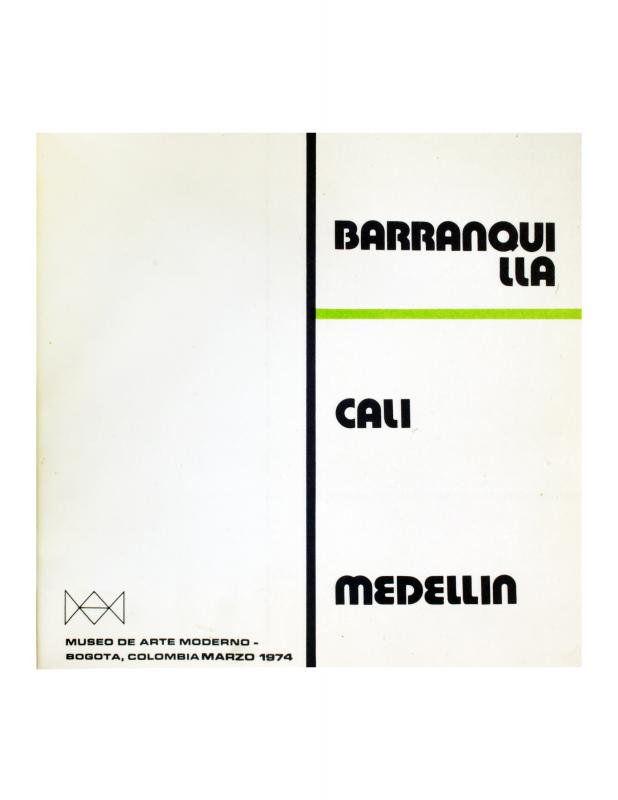The article “Once antioqueños en el M.A.M.” by curator and art critic Eduardo Serrano Rueda (b. 1939) is a crucial text on art from the seventies in Colombia. It signals the emergence of a group of artists from Medellín after the final edition of a biennial that had been held there in 1968, 1970, and 1972. Another art critic, Alberto Sierra, would call this group, whose formulations changed the regional art scene of the fifties, “Los once” or the “generación urbana.” While there were important differences between these artists, most of them had studied architecture and were self-taught in the field of the visual arts. The eleven artists from Medellín who participated in the exhibition were Umberto Pérez, Rodrigo Callejas (b. 1937), John Castles (b. 1946), Marta Elena Vélez (b. 1938), Hugo Zapata (b. 1945), Álvaro Marín (b. 1946), Oscar Jaramillo (b. 1947), Juan Camilo Uribe (1945−2005), Javier Restrepo (b. 1943), Dora Ramírez (b. 1925), and Félix Ángel Gómez (b. 1949).
A number of events geared to young artists were held in Medellín in the sixties: the Semana del Arte Joven (August 23−28, 1965), the Primer Salón Nacional de Artistas Jóvenes Colombianos(1968) of the Universidad de Antioquia, and the Salón de Arte Joven (1970) at Museo Zea. The most important venues for new tendencies in art, though, were the I Bienal Iberomericana de pintura de Coltejer (1968) and the II and III Bienal de Arte Coltejer (held in 1970 and 1972), the latter of which was also known as the Medellín art biennial.
The book Un Lustro Visual: Ensayos sobre arte contemporáneo colombiano (1976) compiles Serrano Rueda’s critical writings from the first half of the seventies. That publication includes not only this text, but also “Barranquilla, Cali, Medellín” (see doc. no. 1088156), a crucial essay that discusses the first exhibition held in the capital city—specifically at the Museo de Arte Moderno of Bogotá—that clearly attempted to bring together art from the country’s regions; that exhibition was a precedent for Once antioqueños.
When Eduardo Serrano Rueda wrote this article, he was the curator of the Museo de Arte Moderno of Bogotá. Soon after returning to Colombia in 1969 after having studied anthropology and art history at New York University (NYU), he directed Galería Belarca (created in 1969). He has published many articles in catalogues and in newspapers with nationwide circulation. Serrano Rueda played a crucial role not only at Galería Belarca but also at the Museo de Arte Moderno of Bogotá, where he organized exhibitions of drawings and prints by emerging and regional artists.

